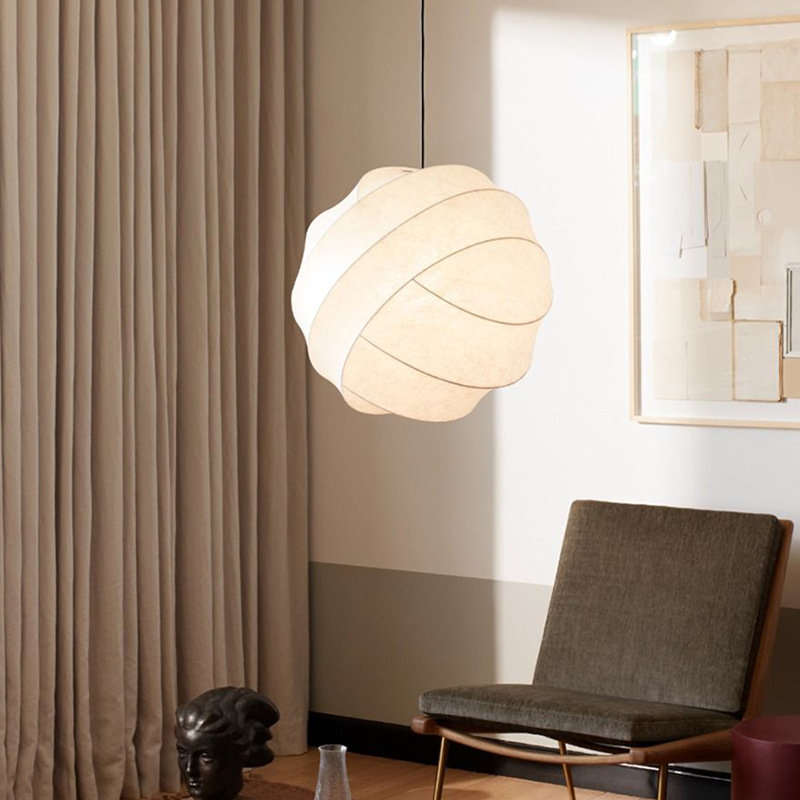Wall lights, also known as wall sconces, are fixtures that are mounted on walls to provide both functional and decorative nounhouse lighting. They are an essential element in home decor as they not only illuminate a space but also add style and ambiance to a room. Wall lights can be used in various rooms of the house, but they are particularly important in living rooms, where they create a warm and inviting atmosphere.
One of the main benefits of using wall lights in living rooms is that they provide additional lighting options. While ceiling lights and floor lamps can provide general illumination, wall lights can be strategically placed to create a layered lighting effect. This allows you to control the intensity and direction of the light, making it easier to create different moods and atmospheres in your living room.
In addition to their functional benefits, wall lights also have aesthetic advantages. They come in a wide range of styles, designs, and finishes, allowing you to choose fixtures that complement your living room decor. Whether you prefer a modern and minimalist look or a more traditional and ornate style, there are wall lights available to suit your taste. The right wall lights can enhance the overall design of your living room and become a focal point in the space.
Types of Wall Lights for Living Rooms: Sconces, Picture Lights, and more
There are several types of wall lights that can be used in living rooms, each with its own unique features and benefits. One popular type is sconces, which are fixtures that are mounted directly on the wall. Sconces come in various shapes and sizes, from simple and understated designs to more elaborate and decorative styles. They can be used as task lighting next to seating areas or as accent lighting to highlight artwork or architectural features.
Another type of wall light commonly used in living rooms is picture lights. Picture lights are specifically designed to illuminate artwork and decorative objects. They are typically mounted above or below a painting or photograph to provide focused lighting that enhances the colors and details of the artwork. Picture lights come in different sizes and finishes, allowing you to choose fixtures that complement the style of your living room.
Other types of wall lights that can be used in living rooms include wall washers, which provide a soft and diffused light that washes over the walls, creating a warm and inviting atmosphere. Wall washers are often used to highlight textured walls or to create a dramatic effect in the room. There are also swing arm wall lights, which have an adjustable arm that allows you to direct the light where it is needed. Swing arm wall lights are perfect for reading areas or as task lighting next to a desk or sofa.
Each type of wall light has its own pros and cons. Sconces are versatile and can be used in various ways, but they may require professional installation. Picture lights are specifically designed for artwork, but they may not provide enough general illumination for the entire room. Wall washers create a beautiful ambiance, but they may not be suitable for task lighting. Swing arm wall lights are adjustable and flexible, but they may take up more space on the wall.
Choosing the Right Wall Lights for your Living Room: Size, Style, and Material
When choosing wall lights for your living room, there are several factors to consider to ensure that you select the right fixtures that will enhance your space. One important factor is the size of the wall lights. The size of the fixtures should be proportionate to the size of the room and the height of the walls. Oversized wall lights can overwhelm a small living room, while undersized fixtures may not provide enough light or make a visual impact in a large space.
Another factor to consider is the style of the wall lights. The style should complement the overall design of your living room and reflect your personal taste. If you have a modern and minimalist living room, you may opt for sleek and simple wall lights with clean lines. On the other hand, if you have a traditional or vintage-inspired living room, you may choose wall lights with ornate details and finishes.
The material of the wall lights is also an important consideration. The material should be durable and of high quality to ensure that the fixtures will last for a long time. Common materials used for wall lights include metal, glass, and fabric. Metal fixtures are sturdy and can withstand wear and tear, while glass fixtures can add a touch of elegance and sophistication to your living room. Fabric shades can create a soft and diffused light that adds warmth to the space.
To ensure that your wall lights match your living room decor, it is important to consider the existing color palette and furniture in the room. If you have a neutral color scheme, you may choose wall lights in complementary colors or finishes to add visual interest. If you have bold and vibrant colors in your living room, you may opt for wall lights in more subdued tones to create a balanced look.
Placement of Wall Lights: How to Create a Balanced and Harmonious Look
Proper placement of wall lights is crucial to creating a balanced and harmonious look in your living room. The placement of the fixtures should take into consideration the size and layout of the room, as well as the purpose of the lighting. Here are some tips for creating a balanced and harmonious look with wall lights:
– Consider the height at which the wall lights will be mounted. The height should be appropriate for the purpose of the lighting. For example, if you are using sconces as task lighting next to seating areas, they should be mounted at eye level to provide optimal illumination. If you are using picture lights to highlight artwork, they should be mounted slightly above or below the center of the artwork to create a balanced look.
– Pay attention to the spacing between the wall lights. The spacing should be consistent and proportional to the size of the fixtures and the wall. If you are using multiple sconces, they should be evenly spaced along the wall to create a symmetrical look. If you are using picture lights, they should be spaced in a way that highlights the artwork without overpowering it.
– Consider the placement of other light sources in the room. Wall lights should complement and enhance the existing lighting in your living room. If you have ceiling lights or floor lamps, you may want to position the wall lights in a way that creates a layered lighting effect. This can be achieved by placing the wall lights at different heights and angles to create depth and dimension in the room.
– Experiment with different placement options. Don’t be afraid to try different arrangements and configurations with your wall lights. You may find that certain placements create a more dramatic effect, while others create a more subtle and understated look. Play around with different combinations until you find the arrangement that best suits your living room decor and lighting needs.
How Wall Lights Enhance the Ambiance and Mood of your Living Room
Wall lights have the power to enhance the ambiance and mood of your living room by creating different lighting effects. The right placement and intensity of wall lights can transform a space from bright and energetic to soft and cozy. Here are some examples of different lighting effects that can be achieved with wall lights:
– Soft and diffused light: Wall lights with fabric shades or frosted glass can create a soft and diffused light that adds warmth and coziness to your living room. This type of lighting is perfect for creating a relaxing and inviting atmosphere, especially in the evening or when entertaining guests.
– Focused and directional light: Wall lights with adjustable arms or spotlights can provide focused and directional light that highlights specific areas or objects in your living room. This type of lighting is ideal for showcasing artwork, architectural features, or decorative objects.
– Upward and downward light: Wall lights that emit light both upward and downward can create a dramatic and visually interesting effect in your living room. This type of lighting can highlight textured walls or create a sense of depth and dimension in the space.
– Layered lighting: By combining different types of wall lights with other light sources, such as ceiling lights or floor lamps, you can create a layered lighting effect in your living room. This allows you to control the intensity and direction of the light, making it easier to create different moods and atmospheres in the space.
To use wall lights to create a cozy and inviting atmosphere in your living room, consider using them as accent lighting or task lighting. Accent lighting can be achieved by placing wall lights next to artwork, architectural features, or decorative objects to highlight them and create visual interest. Task lighting can be achieved by placing wall lights next to seating areas or reading nooks to provide focused illumination for activities such as reading or working on a laptop.
Wall Lights as Art: Using Picture Lights to Highlight Artwork and Decorative Objects

Picture lights are a type of wall light specifically designed to highlight artwork and decorative objects. They are mounted above or below a painting or photograph to provide focused lighting that enhances the colors and details of the artwork. Picture lights come in various sizes and finishes, allowing you to choose fixtures that complement your living room decor.
Using picture lights in your living room can add a touch of elegance and sophistication to the space. They not only illuminate the artwork but also create a focal point in the room. Here are some tips for using picture lights to highlight artwork and decorative objects:
– Choose the right size picture light for your artwork. The size of the picture light should be proportionate to the size of the artwork. If you have a large painting or photograph, you may need a larger picture light to provide adequate illumination. On the other hand, if you have a small piece of artwork, a smaller picture light may be sufficient.
– Consider the color temperature of the picture light. The color temperature refers to the warmth or coolness of the light emitted by the fixture. Warm white light (around 2700K) can create a cozy and inviting atmosphere, while cool white light (around 4000K) can create a more modern and crisp look. Choose a color temperature that complements the colors and style of your artwork.
– Experiment with different angles and positions. The position and angle at which the picture light is mounted can greatly affect the way the artwork is illuminated. Try different positions and angles to find the one that best showcases the colors and details of the artwork. You may also want to consider using multiple picture lights for larger pieces of artwork to ensure even illumination.
– Consider using picture lights to highlight other decorative objects. Picture lights are not limited to artwork; they can also be used to highlight other decorative objects in your living room, such as sculptures, vases, or collectibles. By placing a picture light above or below these objects, you can create a focal point and draw attention to them.
DIY Wall Lights: Easy and Creative Ideas to Make Your Own Wall Lights
If you’re feeling creative and want to add a personal touch to your living room decor, you can try making your own wall lights. DIY wall lights are not only cost-effective but also allow you to customize the fixtures to match your living room decor. Here are some easy and creative ideas for making your own wall lights:
– Mason jar wall sconces: Mason jars can be transformed into beautiful wall sconces with just a few simple steps. Start by attaching a metal bracket or clamp to the back of the mason jar lid. Then, insert a battery-operated LED light string into the jar and secure it with the lid. Finally, mount the mason jar on the wall using a metal bracket or clamp. You can fill the jar with decorative items, such as flowers or fairy lights, to create a unique and personalized look.
– Wine bottle wall lights: Empty wine bottles can be repurposed into stylish wall lights. Start by cleaning and removing the labels from the bottles. Then, insert a string of LED lights into the bottle and secure it with a cork or stopper. Finally, mount the wine bottle on the wall using a metal bracket or clamp. You can choose different colored LED lights to create a vibrant and eye-catching display.
– Paper lantern wall lights: Paper lanterns are inexpensive and easy to customize, making them perfect for DIY wall lights. Start by choosing paper lanterns in different sizes and colors. Then, insert battery-operated LED lights into the lanterns and secure them with adhesive tape or glue. Finally, mount the paper lanterns on the wall using removable adhesive hooks or clips. You can arrange the lanterns in different patterns or create a cascading effect for a whimsical and playful look.
When making your own wall lights, it is important to ensure that they are safe and properly installed. If you are not comfortable with electrical work or mounting fixtures on the wall, it is recommended to seek professional help.
Energy-Efficient Wall Lights: LED and Solar-Powered Options for Eco-Friendly Homes
In today’s environmentally conscious world, energy-efficient lighting options are becoming increasingly popular. Energy-efficient wall lights not only help reduce energy consumption but also save money on electricity bills. Two common types of energy-efficient wall lights are LED lights and solar-powered lights.
LED (light-emitting diode) lights are highly energy-efficient as they use up to 80% less energy than traditional incandescent bulbs. They also have a longer lifespan, lasting up to 25 times longer than incandescent bulbs. LED wall lights are available in various styles and designs, making it easy to find fixtures that match your living room decor. They are also dimmable, allowing you to control the intensity of the light and create different moods and atmospheres in your living room.
Solar-powered wall lights are another eco-friendly option for outdoor spaces. These lights are powered by solar energy, which is converted into electricity through solar panels. Solar-powered wall lights are easy to install as they do not require any wiring or electrical connections. They are also cost-effective as they do not consume electricity from the grid. Solar-powered wall lights are available in various designs and finishes, allowing you to choose fixtures that complement your outdoor decor.
When choosing energy-efficient wall lights for your living room, it is important to consider the color temperature and brightness of the fixtures. LED lights come in different color temperatures, ranging from warm white to cool white. Choose a color temperature that complements the colors and style of your living room. Solar-powered wall lights may have different brightness levels depending on the amount of sunlight they receive during the day. Consider the amount of light you need in your living room and choose fixtures with appropriate brightness levels.
Maintenance and Cleaning Tips for Wall Lights: Keeping Your Living Room Illuminated and Beautiful
Proper maintenance and cleaning of wall lights are essential to ensure that they continue to illuminate your living room and enhance its beauty. Regular maintenance can also help prolong the lifespan of the fixtures and prevent any potential safety hazards. Here are some tips to keep your wall lights in top condition:
1. Dust regularly: Dust and dirt can accumulate on the surface of your wall lights, diminishing their brightness and appearance. Use a soft cloth or a feather duster to gently remove any dust buildup. Avoid using abrasive materials or harsh chemicals that could damage the finish.
2. Check for loose connections: Over time, the electrical connections of your wall lights may become loose, leading to flickering or intermittent lighting. Periodically inspect the wiring and connections, and tighten any loose screws or terminals. If you notice any frayed wires or other electrical issues, it is best to consult a professional electrician.
3. Clean the shades or covers: If your wall lights have shades or covers, they may accumulate dirt, stains, or fingerprints. Depending on the material, you can use a mild soap solution or a specialized cleaner to gently wipe them clean. Be sure to follow the manufacturer’s instructions and avoid using excessive water that could damage the electrical components.
4. Replace burnt-out bulbs promptly: When a bulb burns out, replace it as soon as possible to maintain consistent lighting in your living room. Make sure to use the correct wattage and bulb type recommended by the manufacturer. If you are unsure, refer to the user manual or consult a lighting professional.
5. Inspect for signs of damage: Regularly inspect your wall lights for any signs of damage, such as cracks, chips, or loose parts. Damaged fixtures not only compromise their functionality but can also pose safety risks. If you notice any significant damage, it is advisable to replace or repair the fixture promptly.
6. Consider professional cleaning: For intricate or delicate wall lights, it may be best to seek professional cleaning services. They have the expertise and tools to safely clean and maintain your fixtures without causing any damage.
By following these maintenance and cleaning tips, you can ensure that your wall lights continue to provide optimal illumination and enhance the beauty of your living room for years to come.


